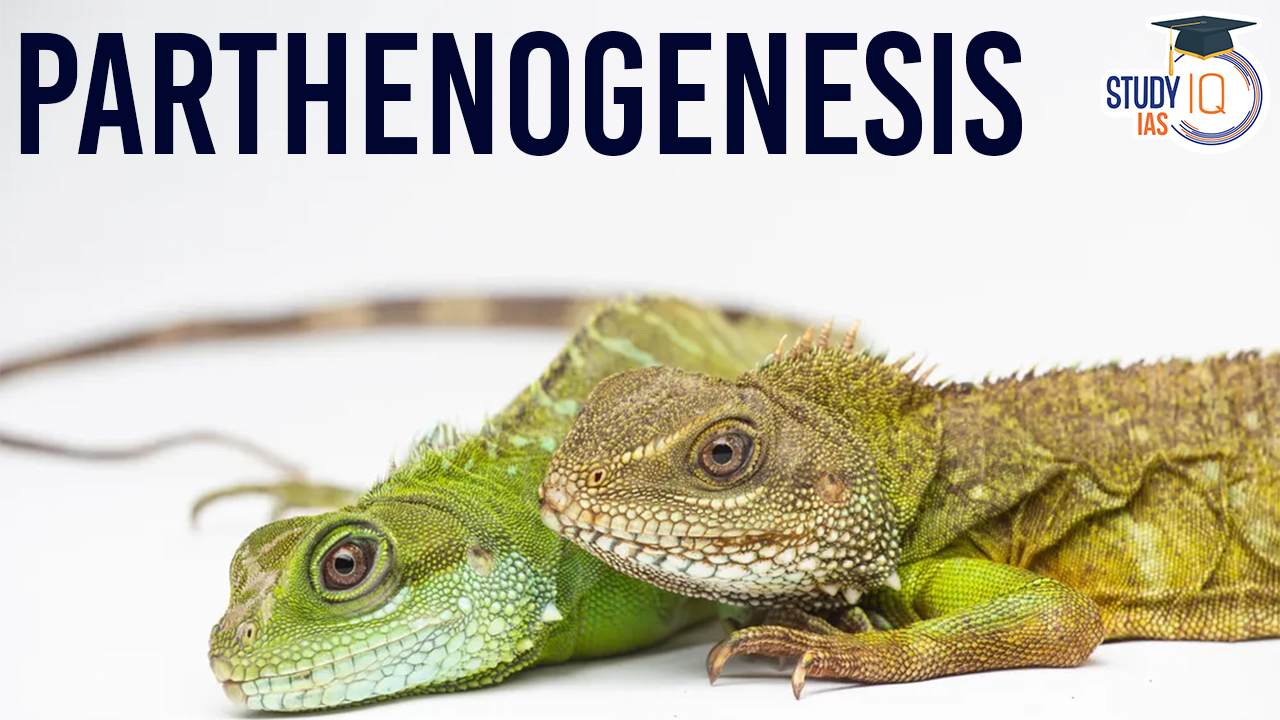Table of Contents
Context: Researchers engineered fruit flies for asexual reproduction by manipulating specific genes, potentially challenging traditional pest control strategies by selecting facultatively parthenogenetic individuals, and limiting long-term effectiveness.
What is Parthenogenesis?
- Parthenogenesis is an asexual reproduction method where an offspring is produced from an unfertilized egg or female gamete, bypassing fertilisation by a male gamete.
- This process is where a zygote forms without male and female gamete fusion.
- It is prevalent in various organisms, including plants, invertebrates like water fleas, aphids, stick insects, certain ants, bees, and parasitic wasps, as well as some vertebrates such as select reptiles, amphibians, fish, and a few bird species.
Types Of Parthenogenesis
Automixis Parthenogenesis
- Involves the fusion of an egg cell with a polar body.
- Results in the potential for genetic variation; offspring may resemble the mother but aren’t exact clones.
- Offspring typically receive two X chromosomes from the mother, leading primarily to female progeny.
- On rare occasions, fertile males with a single X chromosome can be produced, whose sperm cells also contain only the X chromosome.
Apomixis Parthenogenesis
- Egg cells do not undergo meiotic division, maintaining the genetic integrity of the original cell.
- Offspring are exact genetic clones of the mother.
- This form of parthenogenesis is most common in plants and results in genetically identical offspring.
We’re now on WhatsApp. Click to Join
How Parthenogenesis Occurs?
- Parthenogenesis occurs when egg cells, which are haploid and produced in the ovaries through meiosis, develop into offspring without fertilisation.
- During meiosis, a precursor cell divides to form an ovum and three polar bodies, the latter typically degenerating in sexual reproduction, such as in humans.
- However, in some species, the ovum may merge with a polar body, a process known as automixis or meiotic parthenogenesis, introducing a degree of genetic variation despite the absence of sperm.
Key Points Regarding Parthenogenesis
- Egg cells post-meiosis are haploid, carrying half the chromosome count of the original cell.
- Depending on the parthenogenesis mechanism, offspring may be diploid (with a full set of chromosomes) or remain haploid.
- Offspring types include:
- Arrhenotokous: Unfertilized eggs develop into males.
- Thelytokous: Unfertilized eggs develop into females.
- Deuterotokous: Unfertilized eggs may develop into either males or females.


 State Science and Technology Councils (S...
State Science and Technology Councils (S...
 Operation Shiva 2025: Indian Army’s Ma...
Operation Shiva 2025: Indian Army’s Ma...
 World Youth Skills Day 2025, Theme, Hist...
World Youth Skills Day 2025, Theme, Hist...





















